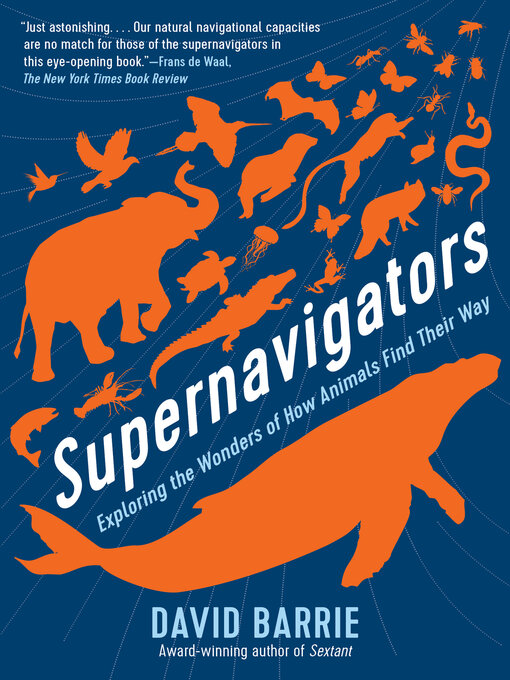"Just astonishing . . . Our natural navigational capacities are no match for those of the supernavigators in this eye-opening book."—Frans de Waal, The New York Times Book Review
Publisher's note: Supernavigators was published in the UK under the title Incredible Journeys.Animals plainly know where they're going, but how they know has remained a stubborn mystery—until now. Supernavigators is a globe-trotting voyage of discovery alongside astounding animals of every stripe: dung beetles that steer by the Milky Way, box jellyfish that can see above the water (with a few of their twenty-four eyes), sea turtles that sense Earth's magnetic field, and many more. David Barrie consults animal behaviorists and Nobel Prize–winning scientists to catch us up on the cutting edge of animal intelligence—revealing these wonders in a whole new light.


